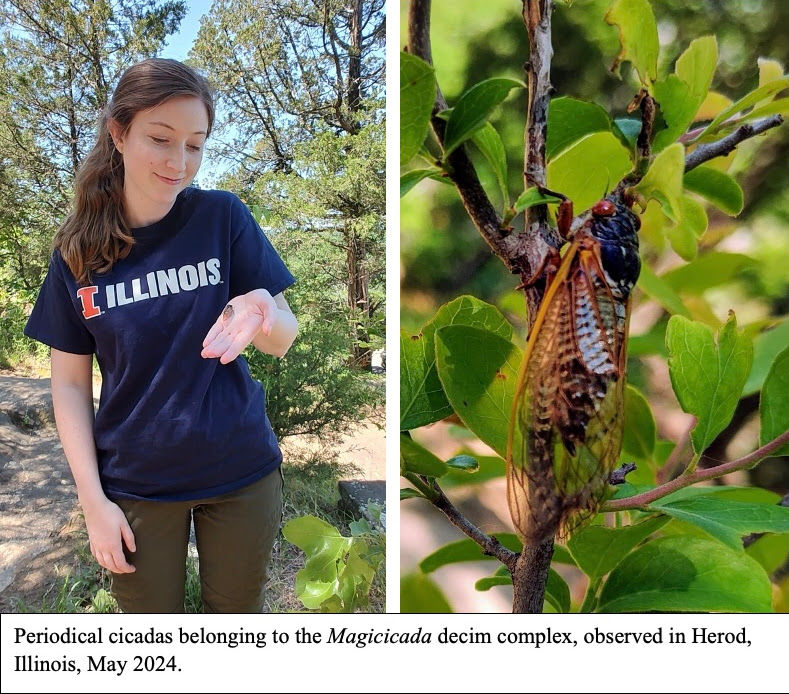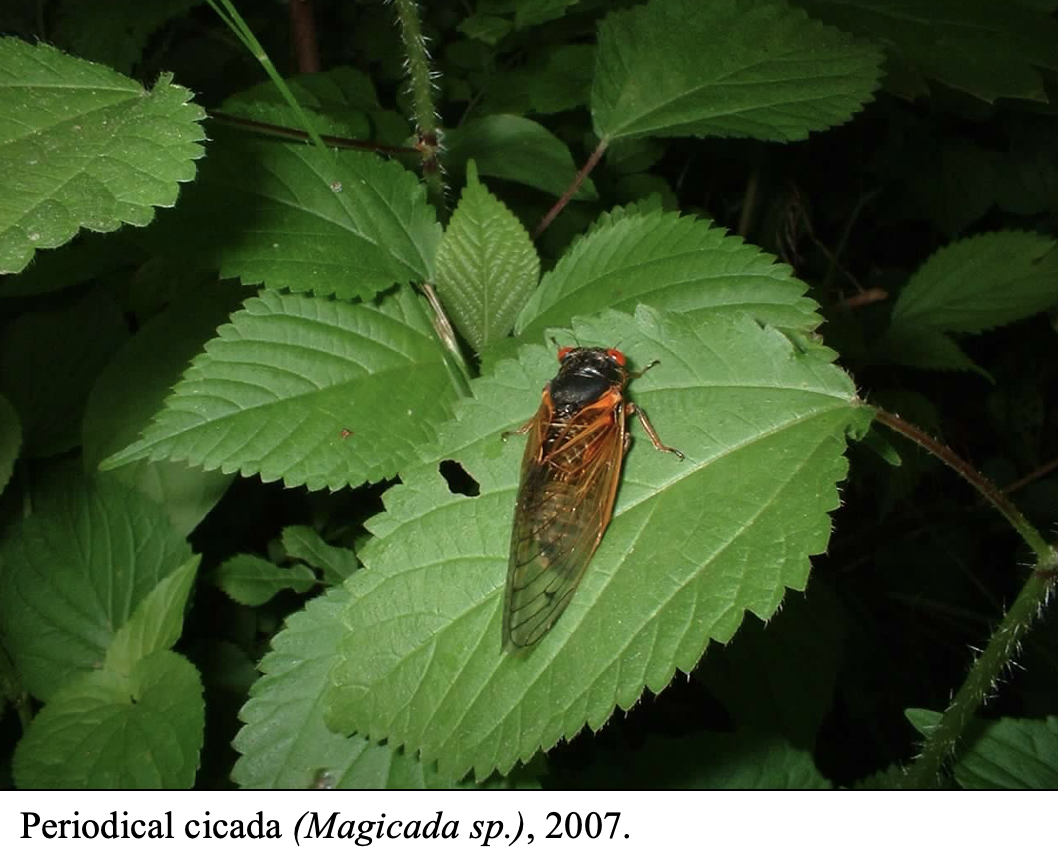Cicada Super Emergence
Published:
A mass emergence of cicadas is occurring across the Midwest. What can we learn from these insects?

Cicada Superbrood
This summer, Illinois is experiencing a rare and extraordinary natural event: the dual emergence of periodical cicadas from both the 17-year and 13-year broods. Periodical cicadas (several species belonging to the genus Magicicada), have spent over a decade quietly developing beneath the soil, feeding on the fluids of tree roots. Now, they are making the journey upwards in overwhelming numbers, a phenomenon that hasn’t occurred in this region since 1803 and will not happen again for another 221 years (Johnson, 2024).
Despite their fleeting time above ground, cicadas may hold the record for the longest juvenile development period of any insect (Williams & Simon, 1995). This is a remarkable feat in the insect world and just one of the many reasons why the dual emergence is such an important moment for scientists and nature enthusiasts alike.
One theory about cicadas’ 13- and 17-year life cycles is tied to the mathematics of prime numbers. Because prime numbers are only divisible by one and themselves, they may reduce the chance of cicadas’ emergence aligning with the population cycles of predators. This could make it more difficult for predators to evolve synchronized life histories that take advantage of the cicada boom (Johnson, 2024; Yoshimura, 1997).

Why do cicadas matter?
While they may be best known for their deafening chorus, cicadas play critical roles in the ecosystem:
• Nutrient cycling: After they die, their bodies enrich the soil, providing temporary resource pulses for forest ecosystems.
• Food source: cicadas provide a feast for numerous bird, mammal, and reptiles species.
• Ecological indicators: Because their life cycles are quite long and sensitive to environmental change, cicadas can help researchers understand the impacts of climate change, habitat loss, and urbanization on native insect populations.
The last time I saw these insects in person, I was only six years old. I still remember being mesmerized by their ruby-red eyes, collecting their delicate exoskeletons, and listening to their synchronized song for the first time. Returning to this event, now as an aspiring conservation biologist, I am reminded of how curiosity can come full circle.
The next emergence of 17-year cicadas in Illinois will take place in 2041. It’s humbling to imagine what changes may unfold on the surface while this next generation slowly develops underground.

Curious to learn more?
You can view a 3D model of a 17-year cicada, listen to its call, and explore the various cicada species found in Illinois here: Cicadas-UCONN.
